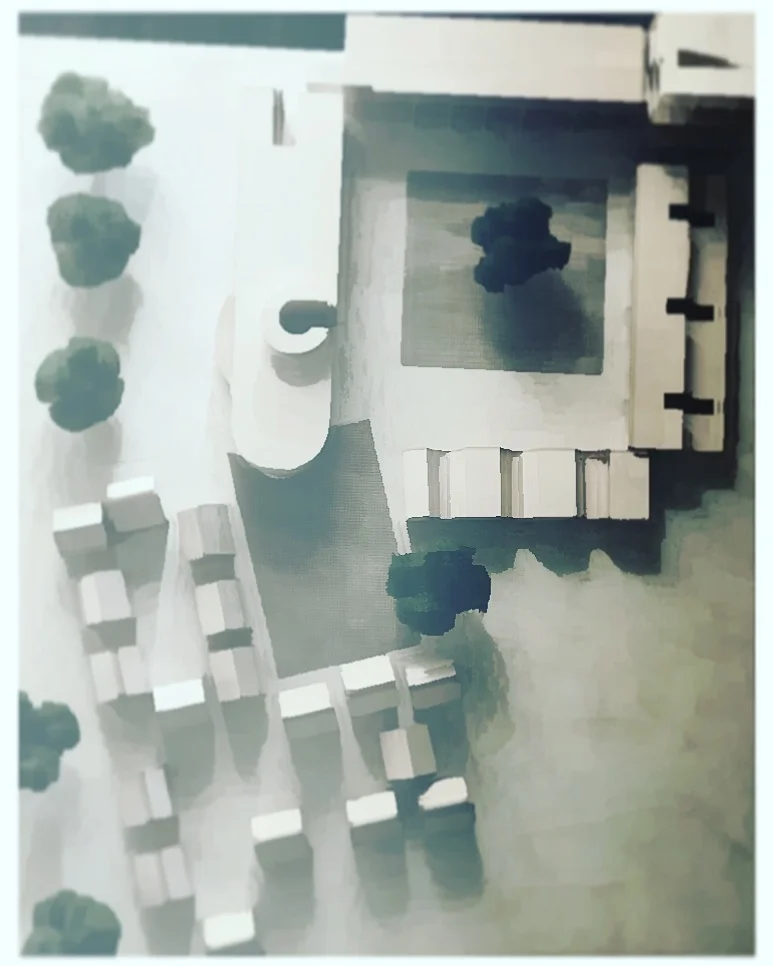This project for ‘Seven Acre City’ is about the cultivation of community brought about by the organization of the built fabric and agriculture. In this example two public spaces containing agricultural functions such as a farmer’s market and a public garden are used to create public centers, or a single center, perhaps, upon furthering reading. Multiple housing typologies including a tower, walk-up apartments, corridor buildings with apartments, town houses, as well as single family residences are gathered at the perimeter of the two main, public spaces forming a communal enclave. Invested in the growth and commerce of agriculture this community is made up through multiple scales of building and growing, and it is the diversity in scale which gives this arrangement its potency.
The juxtaposition of the two spaces created by the rotation between them establishes a tension or undecidabiltiy in the centering on either of the spaces. This provides for a strong spatial sequence while each space maintains the capability of being utilized uniquely and separate from the other, or as one during larger communal events. The architectural forms further define the uniqueness and continuity of the two spaces through scale, patterning of facades, and major building offsets. The continuity of form and facade blurs the line between inside and outside as it relates to the two centers furthering intertwining form and space; agriculture and architecture. As result this project could also be called ‘Archiculture and Agritecture’ due to its process of formation.
At the outset the architecture appears to be defining the communal spaces, but it is the architecture which results from the overlap of the two main spaces. The arrangement or patterning of the landscape or agricultural elements provides for the production and sale of agricultural products while the built environment reinforces the spaces necessary to produce a community culture and a viable economic structure centered around the growth of natural food products. This notion of ‘Agritecture & Archiculture’ simply states that built form and agricultural fabrics are interchangeable in the sense that one does not follow the other, but in the organization of one and the other, they become intertwined to form an edifice sufficient to produce a viable community experience.’

